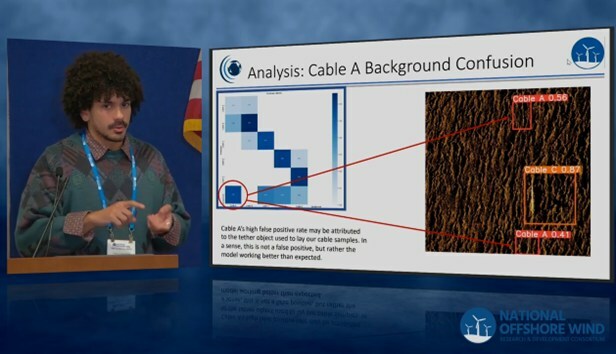Groton, Conn.-based maritime solutions company ThayerMahan Inc. has demonstrated that its SeaScout system can detect damage to export and transmission cables that carry power from offshore wind turbines to onshore power stations, making it possible to identify cable damage prior to failure.
“We apply cutting-edge technology and state-of-the-art AI to gain new insights into critical seabed areas,” explains Michael Connor, ThayerMahan’s president and CEO. “First, our high-speed, synthetic aperture sonar (SAS) delivers ultra-high-resolution imagery. Then we apply our AI algorithms to identify, classify and localize what is there. What we are doing could fundamentally change the commercial offshore construction market.”
ThayerMahan was awarded a $710,000 grant in the fall of 2021 from the New York State Energy Research and Development Authority (NYSERDA) and National Offshore Wind Research & Development Consortium (NOWRDC). The resulting project, entitled “Transmission and Export Cable Fault Detection and Prevention Using Synthetic Aperture Sonar,” demonstrated that synthetic aperture sonar may reduce the number of subsea cable failure incidents by using artificial intelligence to automatically recognize potentially damaged cables revealed in ultra-high-resolution survey imagery. A formal presentation of results was made at NOWRDC’s recent National Offshore Wind R&D Symposium.
ThayerMahan teamed with OceanIQ to analyze a database of cable failures and determine primary cable failure modalities. As part of the study, ThayerMahan acquired wind farm cables and simulated each of the failure modalities. The level of damage varied from no damage to a knotted cable. The simulated cable failures were then placed on the seabed where a high-speed, high-resolution SeaScout system imaged them.
“The simulated cable damage was evident in the SAS survey imagery, and the different failure modalities were distinct,” says ThayerMahan’s Niko Severino, an AI solutions engineer on the project. “I was able to implement a promising machine learning technique to analyze the high-resolution data and assess the damage.”




